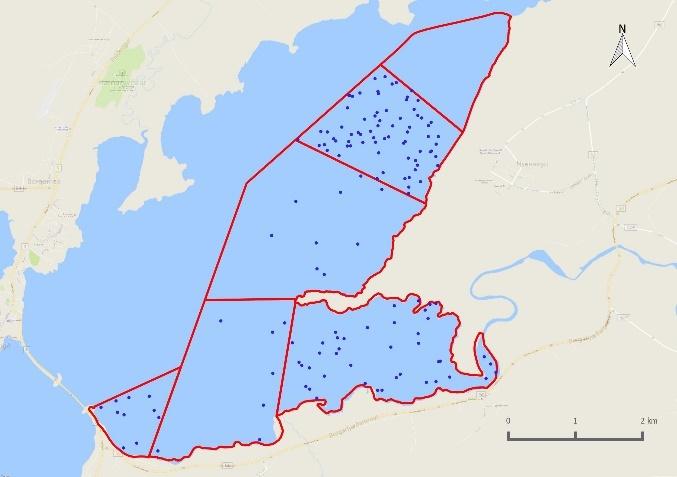
1 minute read
Ringed Plover
Ringed Plover
Charadrius hiaticula Sandlóa
Ringed Plovers were first recorded in the survey area on 18th April and were present in all weeks until 11th September. Birds were observed in greater numbers during low tide surveys than rising tide surveys, which suggests that the birds avail of high tide refuges outside the Andakíll Ramsar site. The first chicks were recorded on the 12th June. At least one pair nested close to the Arctic Tern colony adjacent to Flæðhöfðasker (Est 6). Highest counts occurred during low tide counts in July and August, with monthly peaks of 65 and 64 birds, respectively. During low tide surveys, birds displayed a preference for the three southernmost subsites (Grjóteyrarklakkur (Est 1), Kistufjörđur (Est 2), and Flæðhöfðasker (Est 6)), but were dispersed throughput the six subsites during rising tide surveys.
Number of individuals 70 60 50 40 30 20 10 0 Low-tide Rising-tide

10 11 12 13 14 15 16 17 18 19 20 21 22 23 24 25 26 27 28 29 30 31 32 33 34 35 36 37 38 39 40 41 42 43 Mar Apr May Jun Jul Aug Sep Oct Week number and month
Figure 3-70. Number of Charadrius hiaticula recorded during weekly low tide and rising tide estuarine surveys in the Andakíll Ramsar site between 12th March and 25th October 2017.
(a) Low tide (b) Rising tide

Figure 3-71. Relative abundance of Charadrius hiaticula during weekly (a) low tide and (b) rising tide estuarine surveys in the Andakíll Ramsar site between 12th March and 25th October 2017. Dots are randomly positioned within each subsite. While each dot refers to a single bird, it refers to the bird’s presence in that subsite only, and not the bird’s actual location.











